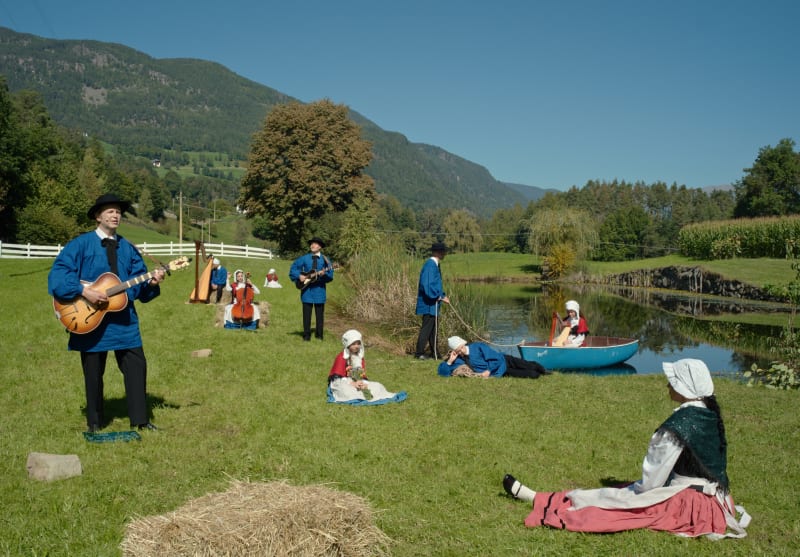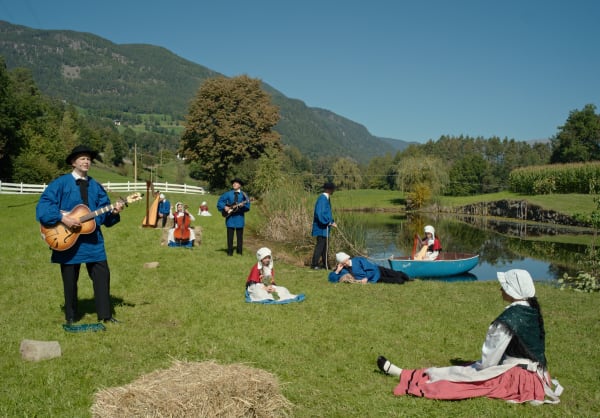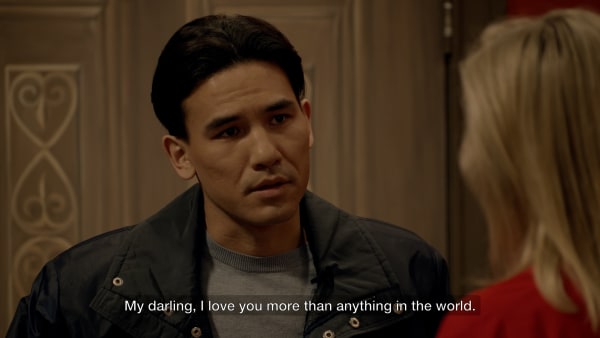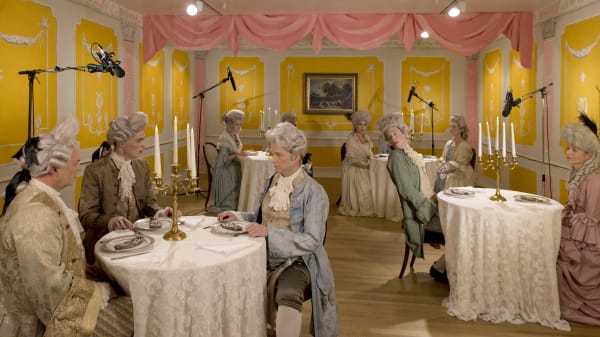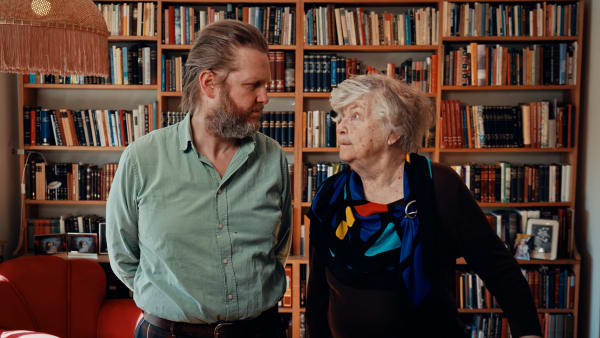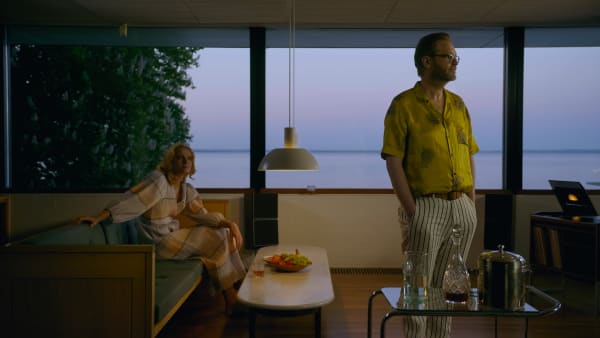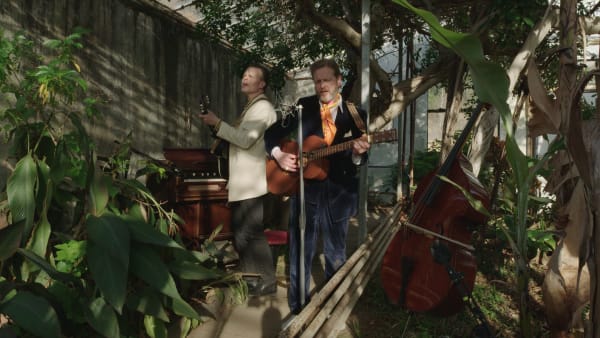Ragnar Kjartansson: The Brown Period
The Brown Period is a yearlong exhibition by Ragnar Kjartansson at i8 Grandi. This presentation, which is Kjartansson's sixth solo show at i8, opened on 18 January and will be on view until 18 December 2025. Throughout the year, the artist will exhibit both new and existing works.
The Brown Period is an extended project, intended to be a dive into the realms of the experimental. As i8 Grandi is a short walk from Kjartansson's studio, the artist will treat the gallery as a project space where lucky strikes and failure collides. For the artist, the bass drum in the project space will be new video works and studio shorts, mixing drama, music, and cinematic indulgence. The works on view will continue to change throughout the year as the show evolves.
The seventh iteration features Ragnar Kjartansson’s Sunday Without Love, a new single-channel video work. Sunday Without Love is inspired by a mid-twentieth century postcard that lives on Kjartansson’s fridge depicting a scene of people wearing matching folk costumes in a nameless location and, incongruously, one of them holding a jazz guitar. Kjartansson, along with nine other performers, donned outfits to mimic this postcard and performed a fragile chorus on repeat in a similar idyllic, pastoral setting. The music was adapted by Kjartansson and frequent collaborator Davíð Þór Jónsson from “Ohne Liebe Leben Lernen,” a 1996 comedic song by German artist Rocko Schamoni. Set against the backdrop of the quiet, and deeply European, countryside the lyrics, “You must learn to live without love,” disrupt the bucolic mood with a feeling of tragic longing, endings, and stoic resignation. In a confluence of references from classical pastoral painting to traditional romantic ballads, the work evokes a portrait of unrequited love as well as a Buddhist sense of acceptance. The video Sunday Without Love was produced from a performance commissioned by TRANSART25, that was originally presented in Renon, Italy in September 2025.
Kjartansson, whose practice is deeply influenced by the comedy and tragedy of classical theater, often creates works imbued with the personal as well as irony and ambiguity. Repeatedly threading through his works, and evidenced in Sunday Without Love, are seemingly oppositional sentiments—humor with sincerity, romance with melancholy—that intertwine in a nuanced balance of contradictions and concordances. A defining characteristic of Kjartansson’s oeuvre is an ability to be at once empathetic and sardonic towards these strong emotions, and to simultaneously embrace the profound and the sincere while holding it at a distance.
Spanning far longer than traditional museum or gallery shows, i8 Grandi's programming focuses on concepts of space and time. The sustained duration of the annual format allows artists to consider how time affects their work, and the fluidity encourages audiences to revisit the changing installations. Kjartansson's is the fourth yearlong presentation at i8 Grandi, following exhibitions by Andreas Eriksson in 2024, B. Ingrid Olson in 2023, and Alicja Kwade in 2022.
